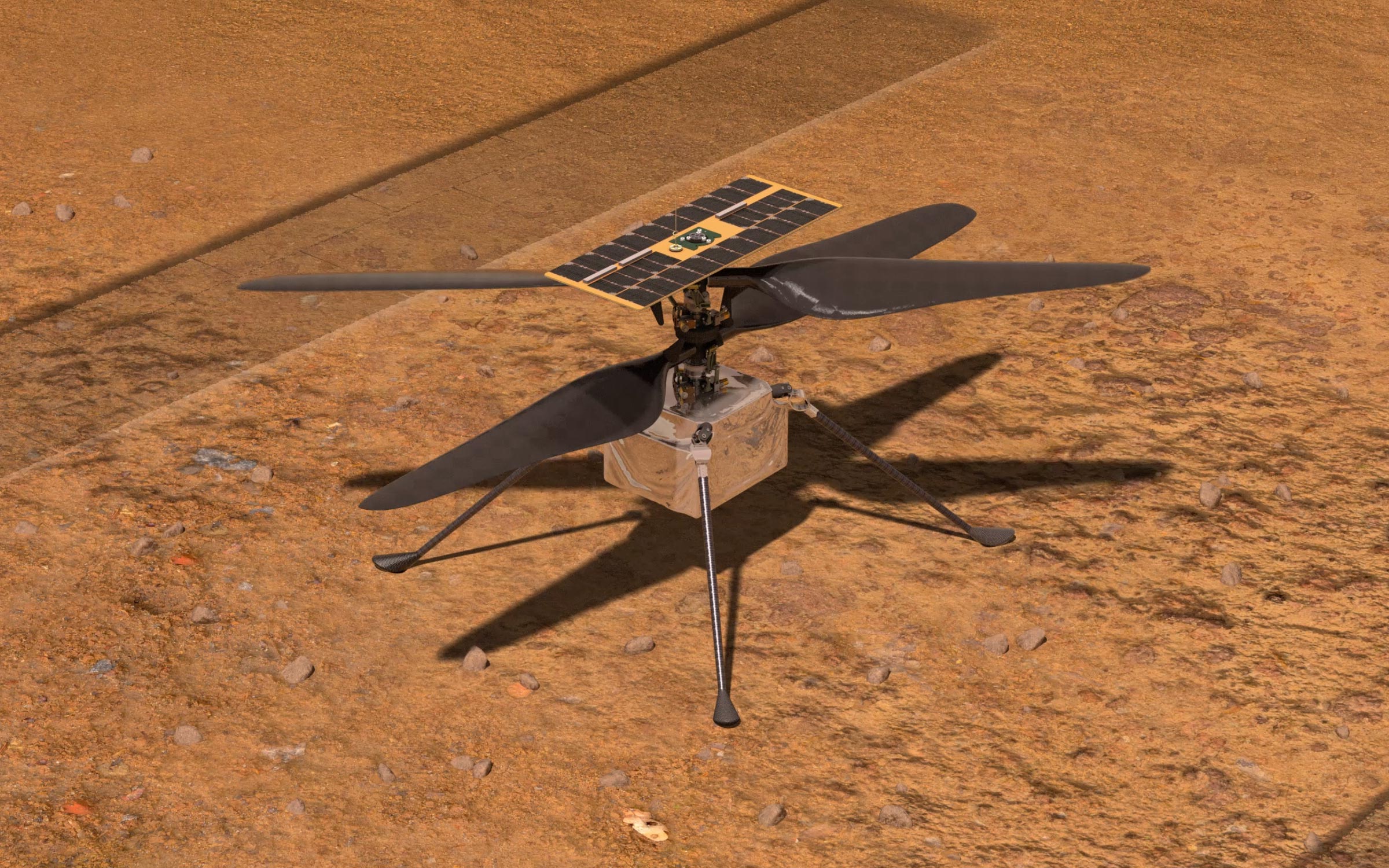El Mars Ingenuity Helicopter de la NASA completó su vuelo número 52 con éxito el 26 de abril, a pesar de los problemas de comunicación que resultaron en una pérdida de contacto con el helicóptero que descendía para aterrizar. (Ilustración del Helicóptero de la Creatividad de la NASA en Marte). Crédito: NASA/JPL-Caltech
Mars Helicopter successfully completed its 52nd flight, despite communication dropouts due to challenging Martian terrain. Contact with the helicopter was re-established on June 28, following a temporary blackout due to a hill blocking the signal between it and the Perseverance rover. Flight 53, scheduled for the coming weeks, will further explore Mars’s westward terrain.
The intrepid rotorcraft may head skyward again within the next couple of weeks.
The 52nd flight of NASA’s Ingenuity Mars Helicopter is now in the official mission logbook as a success. The flight took place back on April 26, but mission controllers at NASA’s Jet Propulsion Laboratory in Southern California lost contact with the helicopter as it descended toward the surface for landing.
The Ingenuity team expected the communications dropout because a hill stood between the helicopter’s landing location and the Perseverance rover’s position, blocking communication between the two. The rover acts as a radio relay between the helicopter and mission controllers at JPL. In anticipation of this loss of communications, the Ingenuity team had already developed re-contact plans for when the rover would drive back within range. Contact was re-established June 28 when Perseverance crested the hill and could see Ingenuity again.

NASA’s Ingenuity Mars Helicopter was captured by the Perseverance rover’s Mastcam-Z on April 16, not long after the rotorcraft’s 50th flight. The helicopter would soon fall silent for 63 days due hilly terrain that interrupted communications between the rover and aircraft. Credit: NASA/JPL-Caltech/ASU/MSSS
The goal of Flight 52, a 1,191-foot (363-meter) and 139-second-long flight, was to reposition the helicopter and take images of the Martian surface for the rover’s science team.
“The portion of Jezero Crater the rover and helicopter are currently exploring has a lot of rugged terrain, which makes communications dropouts more likely,” said JPL’s Josh Anderson, the Ingenuity team lead. “The team’s goal is to keep Ingenuity ahead of Perseverance, which occasionally involves temporarily pushing beyond communication limits. We’re excited to be back in communications range with Ingenuity and receive confirmation of Flight 52.”

NASA’s Ingenuity Mars Helicopter is seen in shadow in an image captured by its navigation camera during the rotorcraft’s 52nd flight on April 26. This image was finally received after Perseverance and Ingenuity were out of communication for 63 days. Credit: NASA/JPL-Caltech
Sixty-three days is a long time to wait for the results of a flight, but the data coming in indicates all is well with the first aircraft on another world. If the remainder of Ingenuity’s health checks are equally rosy, the helicopter may fly again within the next couple of weeks.
The target for Flight 53 is an interim airfield to the west, from which the team plans to perform another westward flight to a new base of operations near a rocky outcrop the Perseverance team is interested in exploring.
Más sobre la creatividad
El innovador helicóptero Mars es la creación del Jet Propulsion Laboratory (JPL), que también tiene responsabilidades de gestión de proyectos en nombre de la sede de la NASA. El apoyo para el proyecto proviene de la Dirección de Misiones Científicas de la NASA. Dos contribuyentes importantes durante la fase de desarrollo de la innovación fueron el Centro de Investigación Ames de la NASA, ubicado en Silicon Valley de California, y el Centro de Investigación Langley de la NASA, ubicado en Hampton, Virginia. Estas instituciones proporcionaron análisis de rendimiento de vuelo vitales y orientación técnica. Socios de la industria, incluido AeroVironment Inc. y Qualcomm y SolAero, contribuyendo al proceso de diseño y suministrando componentes clave del vehículo. Lockheed Space ha emprendido la tarea de diseñar y fabricar el Mars Helicopter Delivery System.
Al frente del proyecto Ingenuity Mars Helicopter en la sede de la NASA está el ejecutivo del programa Dave Lavery.

«Organizador aficionado. Aspirante a evangelista de la cerveza. Fanático de la web en general. Ninja certificado de Internet. Lector ávido».



![¿Quién quedó fuera cuando el ícono de la música country Shania Twain completó el top diez? [Live Blog] – Derbi de oro](https://www.goldderby.com/wp-content/uploads/2024/04/American-Idol-Top-10.jpg)



More Stories
SpaceX lanza 23 satélites Starlink en el vuelo Falcon 9 desde Cabo Cañaveral – Spaceflight Now
Falcon 9 lanza los satélites de navegación Galileo
Un descubrimiento de meteorito sin precedentes desafía los modelos astrofísicos